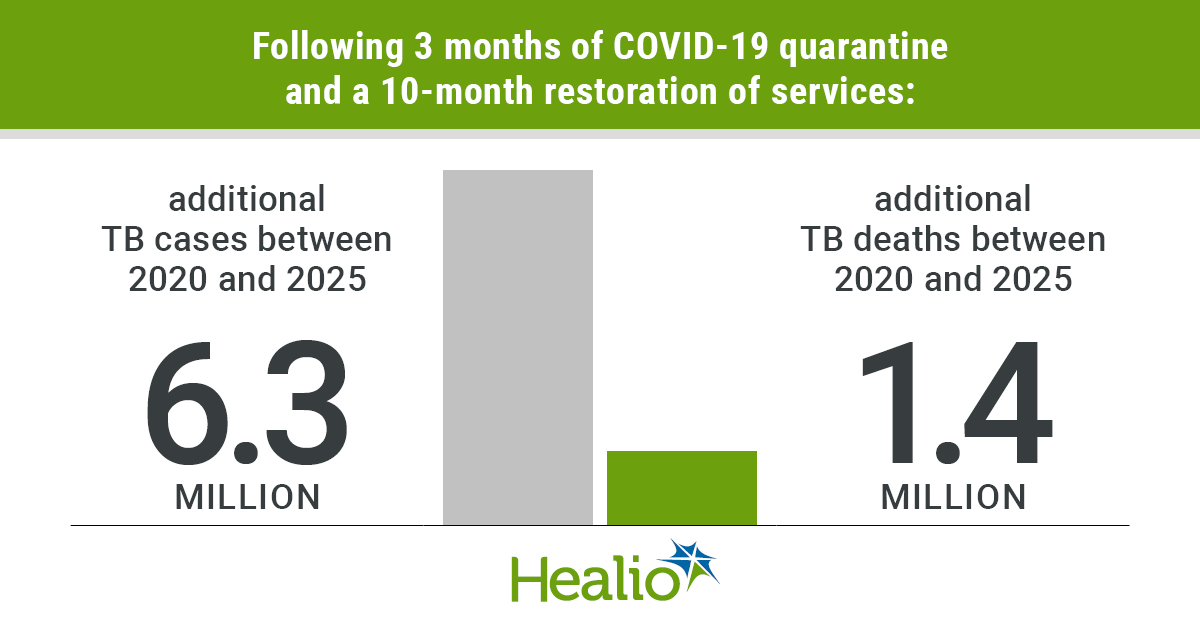COVID-19 will set fight against TB back at least 5 years
A new analysis from the Stop TB Partnership demonstrates that the global response to COVID-19 could lead to more than 6 million additional cases of tuberculosis and 1.4 million additional deaths from the disease between 2020 and 2025.
“We never learn from mistakes. For the past 5 years, TB, a respiratory disease, has remained the biggest infectious disease killer because the ‘TB agenda’ consistently became less visible in front of other priorities,” Executive Director of the Stop TB Partnership Lucica Ditiu, MD, said in a statement. “Today, governments face a torturous path, navigating between the imminent disaster of COVID-19 and the long-running plague of TB. But choosing to ignore TB again would erase at least half a decade of hard-earned progress against the world’s most deadly infection and make millions more people sick.”
A new study commissioned by the Stop TB Partnership used modeling that was developed with assumptions taken from a rapid assessment of the impact of COVID-19 on the TB response. It includes 20 high-burden countries that represent 54% of the global TB burden, with a specific focus on India, Kenya and Ukraine. Estimates from these countries were used to develop global predictions about the impact of COVID-19 on TB.
The study model was based on a 3-month lockdown and a protracted 10-month restoration of services. The model predicts an additional 6.3 million cases of TB and an additional 1.4 million TB deaths between 2020 and 2025.

“The reason we're seeing this ballooning TB burden is because, during the lockdown period, there have been missed opportunities for diagnosis — people haven't been able to present for care,” Nimalan Arinaminpathy, PhD, a reader in mathematical epidemiology at Imperial College London, explained during a press briefing on the analysis. “We have normal TB diagnostic tools being repurposed for coronavirus and now you have this wider pool of potentially infectious people.”
The model based on the 3-month lockdown and the 10-month restoration of services could increase the incidence rates of TB, and deaths from the disease, to levels last seen between 2013 and 2016, respectively — representing a setback of at least 5 to 8 years in the fight against TB.
“The fact that we are now facing a setback to 2013 is sickening. We have so many people sick and dying,” Ditiu said during the briefing. “I am outraged that we lose so much, just from not being able to control what we implement in countries and forgetting about the other programs that exist.”
However, Ditiu vowed to “work on these issues.”
To reduce the effect of the COVID-19 pandemic on TB and “get the world back on track” in achieving the U.N. General Assembly targets, which aim to end TB by 2030, the Stop TB Partnership says that national governments need to take immediate action to guarantee the continuity of diagnostic, treatment and prevention services for TB during the lockdown period and carry out “a massive catch-up effort” to actively diagnose, trace, treat and prevent TB.









